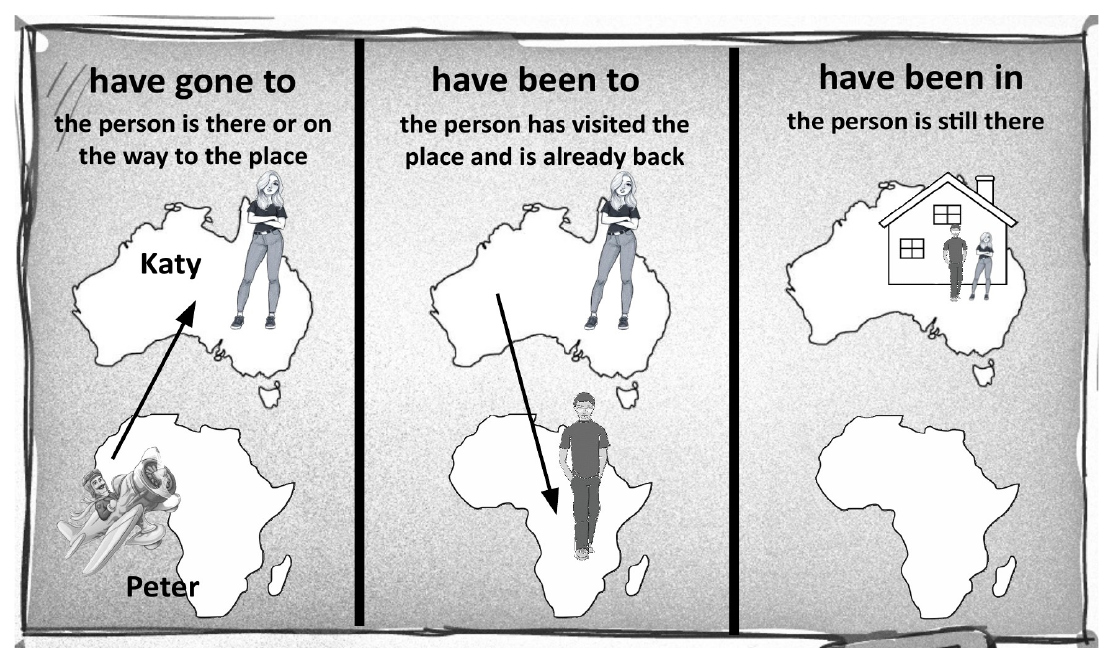In this article, we’ll focus on using the present perfect tense to describe actions and states related to different points in time. Through the story of Peter and his experiences in Australia, students will learn how to differentiate between "has gone to," "has been to," and "has been in". By using visual aids, we’ll make it easier to grasp the meanings of these phrases and their use in different contexts. By the end of the lesson, students will be able to clearly understand when to use each form, helping them describe actions and experiences in a more precise way.
Prepare the board in advance. Print, cut out, and stick pictures of continents and several people on the board. You will need them to establish the context. Visual reinforcement will always make it easier to understand confusing grammar or vocabulary.

Peter lives in Cape Town, Africa. Recently, he met a nice girl on a dating website. Her name is Katy, and she lives in Australia. He decided to go and see her.
Elicit the sentence from the students and explain the meaning. You can move the picture of the man toward Australia to vividly show the action.
Peter has gone to Australia. → He is either there or on his way to Australia.
Peter and Katy had a lot of fun together and really hit it off. However, his visa expired, and he had to return home.
Elicit the sentence from the students and explain the meaning.
Peter has been to Australia. → He has visited the place and is already back home.
Peter realized that he was head over heels in love with Katy and decided to move to Australia. It’s been 2 years since he arrived there.
Elicit the sentence from the students and explain the meaning.
Peter has been in Australia for 2 years. → He arrived there 2 years ago and is still there.
